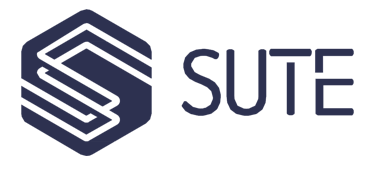
18 Sep Maximizing Productivity in a Remote Environment
Key Summary Points:
- Clear Goals and Expectations: Setting well-defined objectives and deadlines ensures that employees stay focused and engaged, improving performance and productivity.
- Leveraging Technology: Collaboration and automation tools like Microsoft Teams, Slack, and Trello enhance communication, streamline tasks, and reduce inefficiencies in remote work settings.
- Promoting Work-Life Balance: Encouraging flexible hours, breaks, and wellness programs helps prevent burnout, leading to improved productivity and employee well-being.
- Fostering Accountability: Clear expectations, regular feedback, and promoting ownership of tasks drive accountability, motivating employees to maintain high performance levels.
- Personalizing the Work Experience: Offering flexibility in schedules, environments, and tools tailored to individual preferences boosts job satisfaction and productivity.
- Continuous Learning and Development: Providing opportunities for training and professional growth keeps employees engaged, enhances their skills, and improves long-term productivity.
Implementing these strategies helps organizations create a productive and engaged remote workforce.
Introduction
The shift to remote work has become a defining feature of the modern workplace. While it offers flexibility and autonomy, it also presents unique challenges in terms of maintaining productivity. Research from leading organizations, including McKinsey & Company and Harvard Business Review, highlights that effective remote work requires tailored strategies to ensure that employees remain engaged, motivated, and productive. This paper explores the best practices for maximizing productivity in a remote environment, drawing on insights from established sources and industry leaders.
Establishing Clear Goals and Expectations
Setting clear goals and expectations is one of the foundational strategies for ensuring productivity in remote work settings. According to Harvard Business Review (2023), employees who have a clear understanding of their objectives and deadlines tend to perform better and feel more engaged. Remote work can sometimes blur boundaries between tasks, leading to confusion or task overlap. Regular check-ins, clearly defined performance metrics, and outcome-based evaluations ensure that employees stay on track while maintaining flexibility in how they achieve their goals. Managers should communicate regularly with their teams, providing clarity on priorities, deliverables, and timelines (Harvard Business Review, 2023).
2. Leveraging Technology for Efficiency
Technology plays a crucial role in enhancing productivity for remote workers. Collaboration tools such as Microsoft Teams, Slack, and Trello help keep teams connected, enabling seamless communication and project tracking. Research by HubSpot (2023) suggests that integrating technology effectively into remote work models can reduce operational inefficiencies and enhance team performance. Additionally, automation tools such as Zapier or Monday.com can streamline repetitive tasks, allowing employees to focus on higher-value activities (HubSpot, 2023). Organizations should invest in the right digital tools to ensure smooth collaboration and optimize workflows across teams.
3. Promoting Work-Life Balance
One of the primary challenges of remote work is the potential for work-life imbalance. Without clear separation between personal and professional spaces, employees may experience burnout, which can lead to decreased productivity. The World Economic Forum highlights the importance of encouraging work-life balance through flexible work hours, regular breaks, and promoting a culture that values personal well-being. Companies can implement policies such as limiting after-hours communication, promoting time-off usage, and offering wellness programs to support employees’ mental and physical health. A well-rested and balanced employee is more likely to be productive and engaged.
4. Fostering a Culture of Accountability
Accountability is crucial for maintaining high productivity levels in remote work settings. Gallup (2023) emphasizes that employees who feel accountable for their work are more likely to take ownership of their tasks and maintain consistent performance levels. Managers can foster accountability by setting clear expectations, providing regular feedback, and offering performance incentives. Peer accountability can also be encouraged through collaborative projects where each team member has a defined role and responsibility. By promoting a culture of ownership, companies can ensure that employees remain motivated and committed to achieving their goals.
5. Personalizing the Remote Work Experience
Personalization is another key driver of productivity in remote environments. Employees who can tailor their work schedules, environments, and tools to suit their individual preferences are more likely to remain productive and engaged. According to Harvard Business Review (2023), offering flexibility in how, when, and where employees work can lead to increased job satisfaction and better performance outcomes. Providing personalized workspaces, offering development opportunities based on individual goals, and respecting different work styles contribute to creating a more productive workforce (Harvard Business Review, 2023).
6. Continuous Learning and Development
Investing in employee development is crucial for maintaining long-term productivity in a remote work environment. A report by HubSpot (2023) highlights that continuous learning opportunities help employees stay updated on industry trends and sharpen their skills. Providing access to virtual training programs, mentorship opportunities, and professional development courses can enhance employee competencies and improve their contributions to the organization. Additionally, personalized development plans aligned with employees’ career aspirations ensure that they remain engaged and motivated.
Conclusion
Maximizing productivity in a remote environment requires a multifaceted approach that includes clear goal-setting, leveraging technology, promoting work-life balance, fostering accountability, and personalizing the work experience. Organizations that invest in these strategies will not only see enhanced performance but also increased employee satisfaction and retention. As remote work continues to evolve, companies must adapt and implement innovative solutions to meet the unique challenges it presents.
Call to Action: How SUTE Can Help
At SUTE, we understand the complexities of managing productivity in a remote work environment. Our comprehensive suite of tools and services is designed to optimize remote workflows, enhance collaboration, and provide personalized solutions tailored to your team’s needs. From advanced project management software to flexible scheduling systems, SUTE provides everything you need to create a productive and efficient remote workspace. Contact us today to learn how we can help you maximize productivity and drive success in your remote teams.
References
The European Sting (2023). “From start-ups to digital jobs: Here’s what global leaders think will drive maximum job creation”.
Harvard Business Review. (2023). “Maximizing Productivity in Remote Teams”.
HubSpot. (2023). “How to Boost Productivity in a Remote Work Environment”
Harvard Business Review. (2023). “How to Improve Work-Life Balance in a Remote Setting”.


